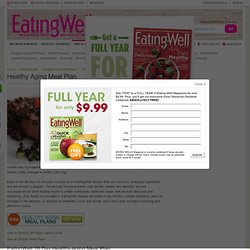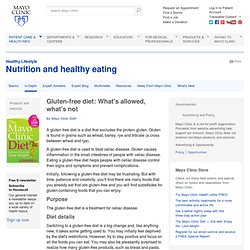

The Bread Bible: 300 Favorite Recipes - Beth Hensperger. Marni Wasserman: Making a Healthy Lunch. I hear it all the time; people just don't know what to pack for lunch!

Those who are opting for healthier options -- that don't involve vending machines or the take-out place down the street -- seem to be the most confused. It may seem like an overwhelming and time-consuming feat to pack a good lunch, but let me tell you that it's not. Once your lunch bag is brimming full of healthy options, you'll not only be thankful for the savings in empty calories, but it will save you money without taking up extra time and effort! Just remember that packing a healthy lunch is only easy when you have healthy ingredients at home to choose from. Here are some suggestions for packing the perfect lunch to go: 1. 2. 3. 4. 5. Simple Weekday Bean Dip Procedure: 1. *It is important to select an organic variety of canned beans, as they are preserved naturally. You can also make your lunch eco-friendly by using Laptop Lunches or sealed glassware.
Healthy Aging Meal Plan. EatingWell's Healthy Aging Meal Plan is designed to provide an overall healthy-eating program that meets the U.S.

Dietary Guidelines for Americans at three different daily caloric levels: 1,200, 1,500 and 1,800. These menus are packed with nutrient-rich foods, including whole grains, lean meats, low-fat dairy and plenty of fresh fruits and vegetables. These menus are specifically formulated to meet the evolving nutritional needs of people aged 51-plus, offering more calcium (to support bone health) and fiber (to keep digestive systems healthy). To promote cardiovascular and brain health, which increasingly become concerns in the aging population, the plans focus on recipes and foods that are low in saturated fat (7 to 10% of daily calories) and cholesterol (daily average is under 300 mg).
These recipes do not contain any hydrogenated fats (i.e., man-made trans fats) and follow recommended dietary guidelines for sodium (daily average is under 2,300 mg). Bob's Red Mill Blog -
Specific Recipes. Cooking Reference. Nutrition/Suppliments. Pantry and Preservation. Recipe Search Engines. Food Quality Watch. Gluten-free diet: What's allowed, what's not. A gluten-free diet is a diet that excludes the protein gluten.

Gluten is found in grains such as wheat, barley, rye and triticale (a cross between wheat and rye). A gluten-free diet is used to treat celiac disease. Gluten causes inflammation in the small intestines of people with celiac disease. Eating a gluten-free diet helps people with celiac disease control their signs and symptoms and prevent complications. Initially, following a gluten-free diet may be frustrating. Purpose The gluten-free diet is a treatment for celiac disease. Diet details Switching to a gluten-free diet is a big change and, like anything new, it takes some getting used to. If you're just starting with a gluten-free diet, it's a good idea to consult a dietitian who can answer your questions and offer advice about how to avoid gluten while still eating a healthy, balanced diet. Allowed foodsMany healthy and delicious foods are naturally gluten-free: Always avoidAvoid all food and drinks containing: NextDec. 20, 2011. Basic Backpacking Menu Planning.
What’s on Chef Glenn's backpacking menu?

I rustle up familiar comfort foods like Mashed Potatoes with Meat & Vegetables or Mexican Beef and Rice with Peppers. By combining one meat, one vegetable, and one starch, I get a tasty meal with lots of color and texture; and the balanced nutrition I need to tackle the next leg of the trail. My basic backpacking menu plan accomplishes three objectives: Reduce meal weight to three ounces or less with a dehydrator.Vary meals with interchangeable ingredients that I like to eat.Cook and eat in a small pot using ½ ounce of fuel or less. Removing water from food (but not the flavor and nutrition) with a dehydrator can cut the food weight in your pack by two-thirds. Meat & Beans (¼ Cup Dried) such as: Ground Beef or TurkeySliced Ham, Turkey, or Roast BeefShrimp, Tuna, Crab LegsBeans (Pre-cooked Black, Red, White, Pinto, etc…) Vegetables (¼ Cup Dried) such as: Starch Base (½ Cup Dried) such as: ¼ Cup Meat or Beans¼ Cup Vegetables½ Cup Starch Base1 Cup Water.